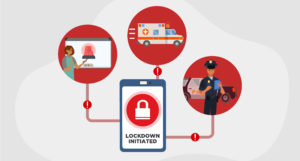Listen to this blog
4 minutes
The Elementary and Secondary School Emergency Relief (ESSER) fund, established under the Coronavirus Aid, Relief, and Economic Security (CARES) Act, has been a financial lifeline for schools grappling with the challenges presented by the COVID-19 pandemic. School administrators are facing critical decisions on how to best utilize remaining resources to support student wellbeing and professional development as the deadline to obligate these funds—September 30—rapidly approaches.
As part of the U.S. government’s effort to support schools during the pandemic, these funds helped institutions manage COVID-19 impacts, including improving student mental health, safety measures, and ensuring learning continuity. These resources have allowed schools to quickly adapt to new health guidelines with minimal disruption to students’ education.
With the obligation deadline looming, it’s essential for schools to strategize how to allocate these remaining funds promptly. The federal government may recoup unspent funds if schools fail to allocate them properly.
Utilization Strategies
Effective spending strategies should prioritize initiatives that offer sustainable impacts on student success and wellbeing, professional development, and support services. Consider investing in:
1. Student Wellbeing Management: Use funds to implement evidence-based practices that promote safe, healthy, and supportive learning environments, including multi-tiered systems of support, and other early intervention strategies. Investing in violence prevention and intervention strategies is particularly important.
Raptor StudentSafe™ embodies a comprehensive approach to creating safe, healthy, and supportive learning environments through evidence-based practices and early intervention strategies. Here’s how StudentSafe meets ESSER’s criteria for fund use:
- Evidence-Based Practice and Multi-Tiered Systems of Support: StudentSafe is grounded in proven behavioral threat assessment (BTA) methodologies, offering schools a structured way to address and manage concerns at multiple levels.
- Early Intervention Documentation: By documenting subtle changes in behavior or minor concerns before they escalate, schools can intervene promptly, providing students with the support they need to succeed academically, socially, and emotionally.
- Violence Prevention and Intervention: StudentSafe supports to violence prevention efforts by enabling a proactive stance on threat assessment and intervention through detailed record-keeping and the consistent categorization of concerns.
- Resource Allocation and Support: By offering insights into areas that require additional support, StudentSafe allows administrators to allocate resources more effectively. This strategic deployment of resources is crucial for addressing disparities and ensuring that every student has access to the support they need, which is a key aspect of ESSER’s goal to promote equity and support underserved communities.
2. Professional Development: Use funds to invest in training and development for faculty and staff to recognize and address student mental health needs, particularly around trauma-informed care and culturally and linguistically inclusive responses, ensuring a supportive and understanding educational environment.
Raptor’s Behavioral Threat Assessment (BTA) Team Training builds confidence in your team to align properly with policies, procedures, and regulations. This helps ensure your BTA program is conducted with fidelity and provides an unbiased approach to helping students move off a pathway of violence.
With effective training, teams can focus on what’s best for the student while improving overall student outcomes and school climate.
- Eliminate overreacting and underreacting
- Build team confidence
- Keep students on a safer path
Our service offering aligns seamlessly with the Elementary and Secondary School Emergency Relief (ESSER) fund’s criteria for professional development utilization, specifically catering to the urgent need for BTA training within educational settings. The essence of ESSER’s mandate is to empower schools in preventing, preparing for, and responding to the COVID-19 pandemic through comprehensive approaches that ensure safe, healthy, and supportive learning environments.
Raptor’s BTA training program directly supports this by:
- Enhancing multi-disciplinary team efficacy.
- Ensuring fidelity to BTA methodologies through expert-led sessions.
- Promoting early intervention strategies, thus facilitating a nurturing environment conducive to academic success and personal development.
- Providing hands-on training and immediate feedback.
- Flexibility and adaptability to ensure that entire teams can be trained without disrupting their critical daily functions.
3. Student Wellbeing Programs: Implement or expand programs aimed at improving mental health using early intervention strategies, such as supportive measures and activities necessary to meet students’ health and wellbeing, including implementing Multi-Tiered Systems of Support (e.g., Positive Behavioral Interventions and Supports), and other early intervention strategies.
Recognizing and documenting initial signs of distress empowers educators to preemptively tackle issues before they escalate. These initial signs, often subtle, demand our attention, signaling that a student might be grappling with challenges beyond their capacity to manage.
When school counselors are empowered with observations of school staff across campus, they can notice patterns that may indict a student is struggling, enabling timely and appropriate support.
Here are a few interventions districts can implement to better meet students’ mental health needs when counselors have a student wellbeing management tool.
- Monitor school data at the district level.
The Public Health Informatics Institute recommends that districts use school attendance and disciplinary data to measure overall public health trends and identify students in need of early intervention.
- Digitally document proactive mental health concerns at the individual level.
Educators are often the first to notice warning signs of mental health issues in their students. By digitally documenting and sharing these low-level concerns with other school staff, students and parents can be connected with appropriate mental health resources, reducing the likelihood that an at-risk child will grow up to harm themselves or others.
Taking a proactive stance enhances the likelihood of successful interventions, broadening the scope of support available. StudentSafe enables administrators to analyze behavioral trends, strategically deploying resources to address and minimize risks effectively.
Extending the Deadline
Schools can request an extension for spending their funds for up to 18 months beyond the obligation deadline, providing additional time to implement and execute critical programs. However, this request must be grounded in a comprehensive plan for utilizing the funds in ways that extend their impact well beyond the immediate future. Engaging with vendors and entering contracts by the September 30 deadline is a crucial step in this process.
Support Student Wellbeing with Raptor StudentSafe
The approaching ESSER funding cliff presents both challenges and opportunities for school administrators. By adopting a strategic approach to utilizing these funds, schools can enhance their capacity to support student wellbeing and success in the face of ongoing pandemic-related challenges.
Related Resources
Guide to K-12 Student Wellbeing
Learn more about the best practices to improving student wellbeing in Raptor’s free, newly revised Guide to K-12 Student Wellbeing.

Listen to this blog
4 minutes





